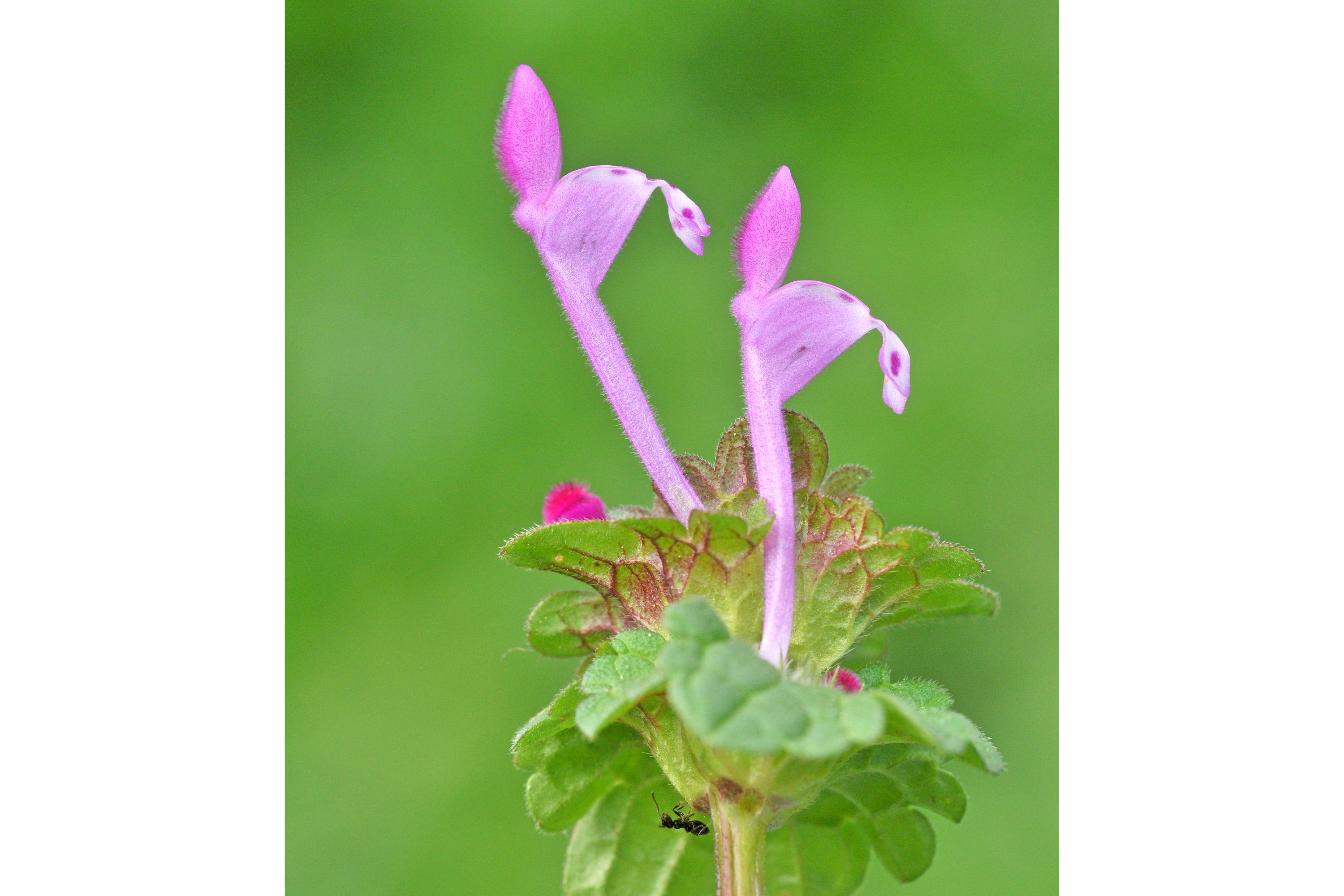Common henbit
(Lamium amplexicaule)

Description
Lamium amplexicaule, commonly known as common henbit, or greater henbit, is a species of Lamium native to Europe, Asia and northern Africa. It is a low-growing annual plant growing to 10–25 cm (3.9–9.8 in) tall, with soft, finely hairy stems. The leaves are opposite, rounded, 2–3 cm (0.79–1.18 in) diameter, with a lobed margin. The flowers are pink to purple, 1.5–2 cm (0.59–0.79 in) long. The specific name refers to the amplexicaul leaves (leaves grasping the stem). Henbit is an annual herb with a sprawling habit and short, erect, squarish, lightly hairy stems. It grows to a height of about 40 cm (16 in). The leaves are in opposite pairs, often with long internodes. The lower leaves are stalked and the upper ones stalkless, often fused, and clasping the stems. The blades are hairy and kidney-shaped, with rounded teeth. The flowers are relatively large and form a few-flowered terminal spike with axillary whorls. The calyx is regular with five lobes and closes up after flowering. The corolla is purplish-red, fused into a tube 15 to 20 mm (1⁄2 to 3⁄4 in) long. The upper lip is convex, 3 to 5 mm (1⁄8 to 3⁄16 in) long and the lower lip has three lobes, two small side ones and a larger central one 1.5 to 2.5 mm (1⁄16 to 1⁄8 in) long. There are four stamens, two long and two short. The gynoecium has two fused carpels and the fruit is a four-chambered schizocarp. This plant flowers very early in the spring even in northern areas, and for most of the winter and the early spring in warmer locations such as the Mediterranean region. At times of year when there are not many pollinating insects, the flowers self-pollinate. Henbit dead-nettle is probably native to the Mediterranean region but has since spread around the world. It is found growing in open areas, gardens, fields and meadows. It propagates freely by seed, where it becomes a key part of a meadow ecosystem, Sometimes entire fields will be reddish-purple with its flowers before spring ploughing. Where common, it is an important nectar and pollen plant for bees, especially honeybees, where it helps start the spring build up.
Taxonomic tree:







